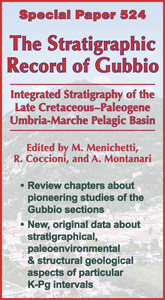Evolution and dynamics of the Cenozoic tectonics of the South Balkan extensional system
- B.C. Burchfiel1,
- R. Nakov2,
- N. Dumurdzanov3,
- D. Papanikolaou4,
- T. Tzankov5,
- T. Serafimovski6,
- R.W. King7,
- V. Kotzev8,
- A. Todosov9 and
- B. Nurce10
+ Author Affiliations
Abstract
The South Balkan extensional system consists of normal faults and associated sedimentary basins within southern Bulgaria, Macedonia, eastern Albania, northern Greece, and northwestern Turkey. Extensional tectonism began during the final convergence across the Vardar, Intra-Pontide, and Izmir-Ankara suture zones, where oceanic regions closed between continental Europe and continental fragments that make up the Pelagonian, Sakar, and western Anatolian tectonic units. Earliest extension of latest Cretaceous– middle Eocene age appears to have occurred within a regional convergent tectonic setting and may be related to an increase in gravitation potential energy within a thickening continental lithosphere. Following diachronous closure across the suture zone, from the middle Eocene to late Oligocene, the transition from a regionally convergent to a regionally extensional tectonic setting occurred and was associated with abundant magmatism and formation of sedimentary basins. Extension was associated with lithospheric thinning probably related to changes in geometry of the subducted slab, dynamics of the mantle wedge, and beginning of slab rollback along the Hellenic subduction zone. A short period of local and diachronous (?) shortening (during latest Oligocene–early Miocene time) occurred in the Thrace basin of northwestern Turkey and in some basins in western Bulgaria and eastern Macedonia. Regional extension began in middle Miocene time and was related to the regional extensional tectonic setting that has dominated the Aegean extensional region to the present. Trench rollback was the dominant dynamic process, but during late Miocene time it was modified by the formation of the western part of the North Anatolian fault zone that partially decoupled the South Balkan extensional system from the Aegean extensional region. During late Cenozoic time, east-west–striking normal faults and associated sedimentary basins in the eastern part of the South Balkan extensional system propagated westward in tandem with westward migration of north-south–striking normal faults and sedimentary basins from western Bulgaria into eastern Albania. This migration was caused by evolution of the Hellenic subduction zone as it increased its curvature during trench rollback and clockwise and counterclockwise rotation of crustal fragments in the west and east, respectively. After formation of the western part of the North Anatolian fault zone, extension within the eastern part of the South Balkan extensional system was related to southward movement of its lithosphere at a slower rate than the extension within the Aegean extensional region. Active extension and basin formation show two provinces of extension that are nearly at right angles to one another and their overlap in the central South Balkan extensional system: east-west extension in central Albania to eastern Macedonia and north-south extension from northwestern Greece and eastern Macedonia to eastern Bulgaria and northwestern Turkey.
Footnotes
-
- Received 2 January 2008.
- Revision received 8 June 2008.
- Accepted 16 June 2008.
- © 2008 Geological Society of America














